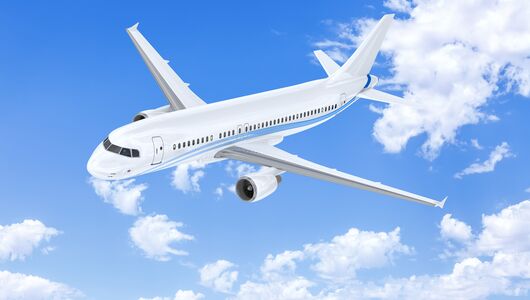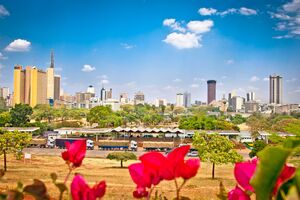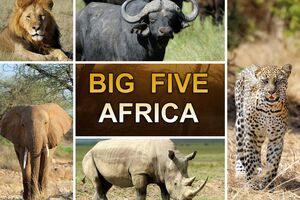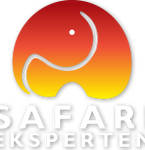
This tour takes you to the outstanding safari destination of Kenya. Here you can experience one of Africa’s biggest national parks without constantly having to move from lodge to lodge. After your first night in Nairobi, which includes a visit to the Karen Blixen Museum and more, you will stay for six nights in an excellent lodge, surrounded by the beautiful African bush and an impressive number of animals - which you can often see directly from camp.
Departures every Thursday all year round

TOUR HIGHLIGHTS
- Game drives in the enormous Tsavo National Park
- Walking safari with a Park Ranger
- Visit a local school
- Introduction to Swahili - the local language
- Historical account on the First World War in Africa
- Karen Blixen’s home, Elephant Orphanage & the Giraffe Centre
This tour will give you a great chance of seeing all of the “Big Five”. An exciting safari adventure awaits you in Kenya’s biggest national park.
First class cultural and historical experiences
On top of your safari this tour offers some exciting cultural experiences. These include visiting a local school, and getting an introduction to the local language, Swahili. An exciting look at the dramatic events that took place in Kenya during the First World War also awaits you.
Few changes of accommodation
This is just the tour for people looking for a high quality safari, but would rather not move to different lodges all the time during your tour.
Great food
The lodge’s kitchen offers some nice treats accompanied by excellent wine, all served in an open sided restaurant, giving you great views of the beautiful surroundings.
Excellent lodge facilities
The swimming pool and the well stocked lounge bar are natural meeting points for our guests after the day’s adventures. Naturally Wi-Fi is available in a number of places in the lodge’s public area.
Day to Day Programme
DAY 1: FLIGHT TO NAIROBI

Depart from your local airport and fly to Nairobi via, for example, Paris or Amsterdam.
Meals and drinks will naturally be included on your intercontinental flight.
DAY 2: ARRIVAL IN NAIROBI, ELEPHANT ORPHANAGE AND BLIXEN MUSEUM

You will arrive in Nairobi early in the morning, once you have cleared immigration and customs you will be met by our representative in Nairobi, and then head for the first stop of the tour, the Giraffe Centre, where you can feed giraffes, and meet them ”eye to eye”. Afterwards you will visit the Daphne Sheldrick Elephant Orphanage in Nairobi, which lies on the fringes of Nairobi national park.
Here you get close to young orphaned elephants, and a few rhinos which have met the same fate, where they are fed and cared for until they can be released in special areas within Tsavo national park, on their way to a new life in new family herds in the wild. The centre is open for an hour every day from 11.00 – 12.00.
You will then visit Kazuri Beads and afterwards be driven to Karen Blixen Coffee & Gardens, where a delicious lunch will be awaiting you. The restaurant is housed in the old school building that Karen Blixen built for her employees children.
After lunch you will visit Karen Blixen’s farm, which is a must see for fans of “Out of Africa”. The museum has been set up in Karen Blixen’s home at the foot of the Ngong Hills in the Nairobi’s Karen district. After your visit you will be taken to the EKA Hotel, where you will stay for the night.
Accommodation is in a 3 - 4 star hotel and includes breakfast.
DAY 3: NAIROBI - VOI - TSAVO

Transfer to the train station to take the new Nairobi-Mombasa train’s 08.20 departure to Voi, which is close to Tsavo National Park. Your train journey will be in 1st Class and is very comfortable. You will be met at Moi train station at around 12.30 by your driver/guide and transferred to Ashnil Aruba Lodge. After only a 15 minute drive from the station you will enter Tsavo East National Park, where you will quickly see the beautiful scenery and your first wild animals. The drive through the park to Ashnil Aruba Lodge takes circa. 1 hour. After lunch you will start your safari, with an afternoon gamedrive in the park.
Dinner and overnight at Ashnil Aruba Lodge which will be your base for the next 6 nights.
The lodge is sited next to Aruba Dam, which is a naturally assembly point for the varied local animal life, which you can often see directly from the lodge.
There are 40 rooms which all offer a high level of comfort, with beautiful bathrooms, and your own veranda/terrace offering views of the reserve.
Meals are taken in the open-sided restaurant, from where you take in the beautiful surrounding nature. The pool area and the lounge are naturally both popular with the guests when they are in camp.
DAY 4: SAFARI DRIVES IN TSAVO

At sunrise, 06.30 in the morning, you will drive out onto the savannah. The beautiful morning light combined with the freshness of the savannah, often make the early morning hours the best time to see animals. Amongst the big game animals you can see in the park are lion, leopard, elephant, buffalo, giraffe, baboon and the elegant beautiful giraffe-gazelle, also known as the gerenuk.
After an exciting safari you will return to the lodge where a very generous breakfast buffet will be awaiting you.
During the day you can relax and enjoy the swimming pool.
In the afternoon you will again go on safari, finishing when the sun sets at 18.30. The day’s activities will end with a welcome cocktail together with the lodge’s manager, who will tell you about the lodge and the surrounding area. Afterward is dinner and the rest of the evening in the lodge.
DAY 5: WAKING SAFARI

After lunch it will be time for you to set off on an exciting walking safari along the banks of the beautiful Galana river, which is formed by the Tsavo and Athi rivers merging close to the Lugard waterfall, before finally flowing into the Indian Ocean. The river is vitally important for the wildlife and is always a good place to encounter game animals. The walking tour is naturally accompanied by armed park rangers.
During this tour you will be able to see the Yatta Plateau, which at 300 km in length and up to 10 km in width is one of the biggest lava flow in the world, and forms an impressive background to this part of the reserve.
You will return to the lodge in time for lunch. During the rest of the day you will have time to relax, and enjoy the local nature while sitting by the pool for example.
DAY 6: SWAHILI AND SAFARI

After a peaceful morning and a lovely breakfast you will be given an introduction to Swahili, which is spoken even in districts far from East Africa.
This introduction to the national language will be followed by you being given an insight into the local cuisine.
After lunch there will be a safari in the reserve, followed by dinner and an evening in the lodge.
DAY 7: FIRST WORLD WAR IN TSAVO AND SAFARI

After breakfast you will visit a local school (depending on local school holidays) where you will see that good teaching can be provided even in the most humble surroundings.
From here you will continue to Voi church yard where victims of the first world war, both local and British and allied casualties are buried. They lost their lives during the regular assaults from what was then German East Africa (now Tanzania), which in particular targeted the important Mombasa to Uganda railway line.
Lunch will be taken at the wonderfully situated Voi Safari Lodge. From here you will enjoy a safari drive back to Aruba Lodge for dinner.
DAY 8: SAFARI AND FAREWELL DINNER

The tours last safari adventures will take place this morning and afternoon, when you will have your final safari-drives in Tsavo. Perhaps you will be lucky enough to “tick off” another couple of animals that you haven’t yet seen.
In the evening there will be a farewell dinner, including Kwaheri cake, during which many of the tours exciting experiences will doubtless be shared.
DAY 9: FROM TSAVO TO THE KENYAN COAST

After breakfast you will drive for a couple of hours to get to Mombasa and its north coast Travellers Beach Hotel, where you can spend the rest of the day relaxing around the pool, or swimming in the Indian Ocean.
In the late afternoon or early evening you will be driven to the airport for your flight to Nairobi, where you will catch your connecting flight home.
DAY 10: ARRIVAL HOME

After catching a connecting flight in, for example, Amsterdam you will arrive at your local airport in the morning.
Accommodation on the tour

Aruba Lodge
Only a couple of hours drive from the major harbour town of Mombasa and the beaches of the Indian Ocean, lies Aruba Lodge in Tsavo National Park. The lodge is situated next to Aruba Dam, which is a natural assembly point for the varied local animal life, which you can often see directly from the lodge. Here you get excellent accommodation set in a beautiful landscape and can see an impressive amount of wildlife – often directly from our lovely lodge. Our 40 rooms all offer a high level of comfort, with beautiful bathrooms, and your own veranda offering views of the reserve.
Read moreAttractions on the tour

Tsavo National Park
Kenya’s largest national park, the vast expanse of Tsavo covers a total of 23.000 km2, which makes it one of the largest parks on the whole continent. It is divided into western and eastern sections by the main road and railway line between the country’s two biggest cities, Nairobi and Mombasa. The park is home to the country’s largest population of elephants, which numbers around 12,000 head, and the rare black rhinoceros as well as many large baobab trees. From the small western section of Tsavo, in clear weather you can see the snowy peak of Kilimanjaro. This section of the park is very hilly, the landscape dominated by recent volcanic activity. Here you can also find a number of wetlands and the impressive Mzima springs, with their hippopotamus and crocodiles, where around 220 million liters of crystal clear water gushes forth from the ground every day, a small proportion of which is enough to supply Mombassa with water via a long pipeline. This underground spring water has its original source in the rainfall on Kilimanjaro and the Chyulu Hills.
Read more
Nairobi
Nairobi is the capital of Kenya, East Africa’s most important business hub and with a population of nearly 4 million inhabitants, amongst the three biggest cities in the region, along with Addis Ababa in Ethiopia and Dar es Salaam in Tanzania. The city also has one of the most important airports on the whole continent, and is the main starting point not only for our Kenyan safaris, but also many safaris to neighbouring countries such as Tanzania, Uganda and Rwanda, even tours to more southern African destinations such as Malawi, Zambia and Zimbabwe, have their African starting point in Nairobi’s airport, with its great connections to these countries.
Read more
The Indian Ocean
The Indian Ocean is the smallest of the globe’s three great oceans, but certainly not the least interesting. Along the east coast of Africa in Kenya, Tanzania and Mozambique, and certainly not to forget the tropical island paradises of Mauritius, Madagascar, Bazaruto, Zanzibar and the Seychelles, your dreams of the perfect tropical beach paradise can be made real.
Read more
THE BIG FIVE
The Big Five is a historic term that comes from big game hunting. It groups together the five animals that were considered to require the most courage and skill to hunt: Elephant, rhino, buffalo, lion and leopard. The term has been readily adopted by today’s wildlife safaris, on which rifles have been swapped for a camera and animals are only “shot” through a telephoto lens. It is also widely used in the marketing of reserves, camps and lodges, where the “Big Five” can be found, and visitors have a reasonable chance of encountering them.
Read morePrices
The Price Includes
- Return flights from N.Europe - Kenya
- Economy class flights
- Airport hotel in Nairobi
- Visit to the Karen Blixen Museum and the Giraffe Center
- 6 nights accommodation in Aruba lodge incl. all meals
- 2 morning safari-drives in Tsavo East
- 5 afternoon safari-drives in Tsavo East
- 1 walking safari
- Introduction to Swahili - the local language
- Visit to local school and Voi churchyard
- All airport transfers in Kenya
The Prices Does Not Include
- Beverages
- Gratuities
- Travel & cancellation insurance
- Any extra excursions
- Kenyan Visa (USD 50,- pr. person)
- EU-Liability Insurance: EUR 10.- per person
- Everything else not listed under “the price includes"


















